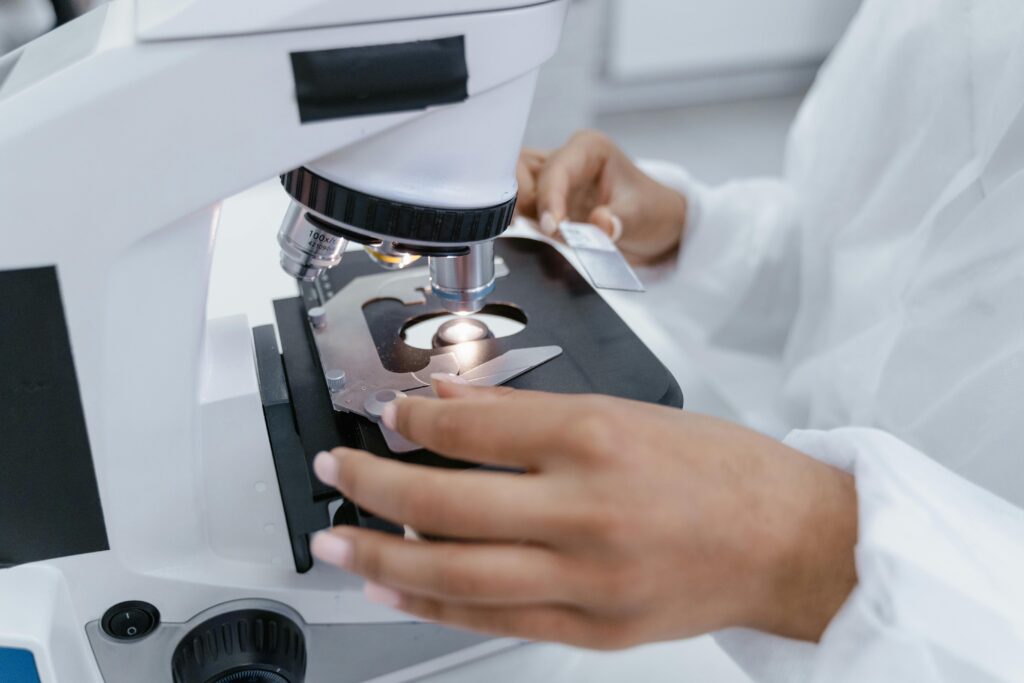Safety of Stem Cell Therapy for Parkinson’s
A Promising Advance in the Search for Greater Safety and Efficacy

Although further clinical trials will be needed to demonstrate the efficacy of these therapies, brain transplantation of dopamine-releasing neurons is a promising treatment.
Almost indefinite proliferation, as well as the ability to give rise to any cell type, are characteristics of pluripotent stem cells. Embryonic cells naturally possess this characteristic, as they are destined to form a complete organism. However, the induced pluripotent stem cells (iPSCs) discovered by S. Yamanaka, for which he was awarded the Nobel Prize, have these same characteristics.
The journal Nature reports on the clinical trials by Sawamoto et al. 1 and Tabar et al. 2, which, using pluripotent stem cells, seek to treat Parkinson’s disease, a neurodegenerative disease that affects 8.5 million people worldwide.
More than 100 clinical trials are already underway to obtain products derived from pluripotent stem cells, most of which focus on the eye, the central nervous system, and cancer. Potential therapies for Parkinson’s disease are the most advanced among neurodegenerative diseases of the central nervous system. Parkinson’s disease is characterized by the increasing decrease in dopaminergic neurons. The dopaminergic system is made up of a set of neurons that produce, release, and respond to dopamine. This system has several pathways; one of them is the nigrostriatal pathway, which connects the substantia nigra to the striatum. This pathway is crucial for movement control, and its malfunction is associated with Parkinson’s disease. Slowness of movement, muscle rigidity, gait disturbances, and tremors are symptoms associated with this condition.
As is known, levodopa, a precursor of dopamine that circulates from the bloodstream to the brain, is usually administered to treat Parkinson’s disease. The effectiveness of this treatment is decreasing due to the scarcity of dopaminergic neurons. For this reason, transplantation of dopamine-producing cells could be a valid therapy. As early as the 1980s, cells from the fetal ventral midbrain, where dopaminergic neurons are abundant, were transferred to the striatum of Parkinson’s patients. The result was increased dopamine levels and improved motor function for many years.
In addition to the technical challenges of obtaining the quantity and quality of cells for transplantation, the use of fetal brain tissue also raised ethical concerns. One possible solution is the generation of dopaminergic cells using pluripotent stem cells, capable of multiplying abundantly. Currently, many research groups have easily produced dopaminergic neurons from human pluripotent stem cells and transferred them to animal models of Parkinson’s, thereby achieving recovery of their functions. In 2020, an individual received dopaminergic neuron precursor cells obtained from cells in their epidermis, derived from induced pluripotent stem cells. Subsequently, clinical trials have been conducted to verify this initial experiment.
In the first Nature article we referenced, Sawamoto et al. report on a Phase I/II trial conducted in Japan. They worked with induced pluripotent stem cells to obtain dopaminergic progenitor cells and transplanted them into both cerebral hemispheres of seven people with Parkinson’s disease. Although the primary objective was safety and potential adverse effects, they also reviewed dopamine levels and motor symptoms. The transferred cells produced dopamine and did not cause tumors (the possibility of tumor formation is always a risk associated with pluripotent stem cells). No serious adverse effects were reported. On the other hand, a decrease in motor symptoms was observed. Of the six participants, five showed improvement in their motor skills, which continued when they discontinued their standard medication.
In the other article we referred to, Tabar et al. reported the results of a Phase I clinical trial. Twelve participants from Canada and the US received dopaminergic precursor cells from an embryonic stem cell line. A 50% reduction in symptoms was observed at 18 months in those who received a high dose. The survival of the transferred cells and the increase in dopamine production were notable. It is also important to note that no involuntary movements (dyskinesia) were observed, as is often the case with this type of transplant.
These two studies show that allogeneic transplants (from donors) for treating Parkinson’s appear to be safe. Of course, their efficacy still needs to be confirmed by further research. It must be taken into consideration that these studies were conducted in small, open-label populations (researchers and participants were aware of the treatment they were receiving), so the placebo effect or researcher bias could have influenced their results. However, one undeniable fact is that both clinical trials demonstrated safety and indicated potential efficacy. A more complete assessment will have to wait until the completion of phases II and III, but this does not prevent us from pointing out that we are witnessing an important step toward establishing this type of cell therapy for Parkinson’s.
From a bioethical perspective, however, we must emphasize that work with induced pluripotent stem cells does not deserve the same evaluation as work with human embryonic stem cells. As we know, obtaining embryonic stem cells from the inner mass entails the death of the embryo, the tiny human organism that, if unimpeded, will develop normally until birth. Therefore, it is not lawful to carry out these types of actions that truncate the life of a human being in its infancy.
On the other hand, working with induced pluripotent cells, in principle, does not present this ethical difficulty. Furthermore, if the initial cells come from the same person, there would be no problems with rejection or immunological incompatibility.
Related

Pope Leo XIV’s First Regina Caeli: A Message of Hope and Peace
Irene Vargas
11 May, 2025
5 min

The Alliance Between Friendship, Recognition of the Other, and Technology
Observatorio de Bioética UCV
09 May, 2025
13 min

Leo XIV: “Peace be with you all”
Exaudi Staff
08 May, 2025
5 min

The True Conclave
P Angel Espinosa de los Monteros
08 May, 2025
3 min
 (EN)
(EN)
 (ES)
(ES)
 (IT)
(IT)

